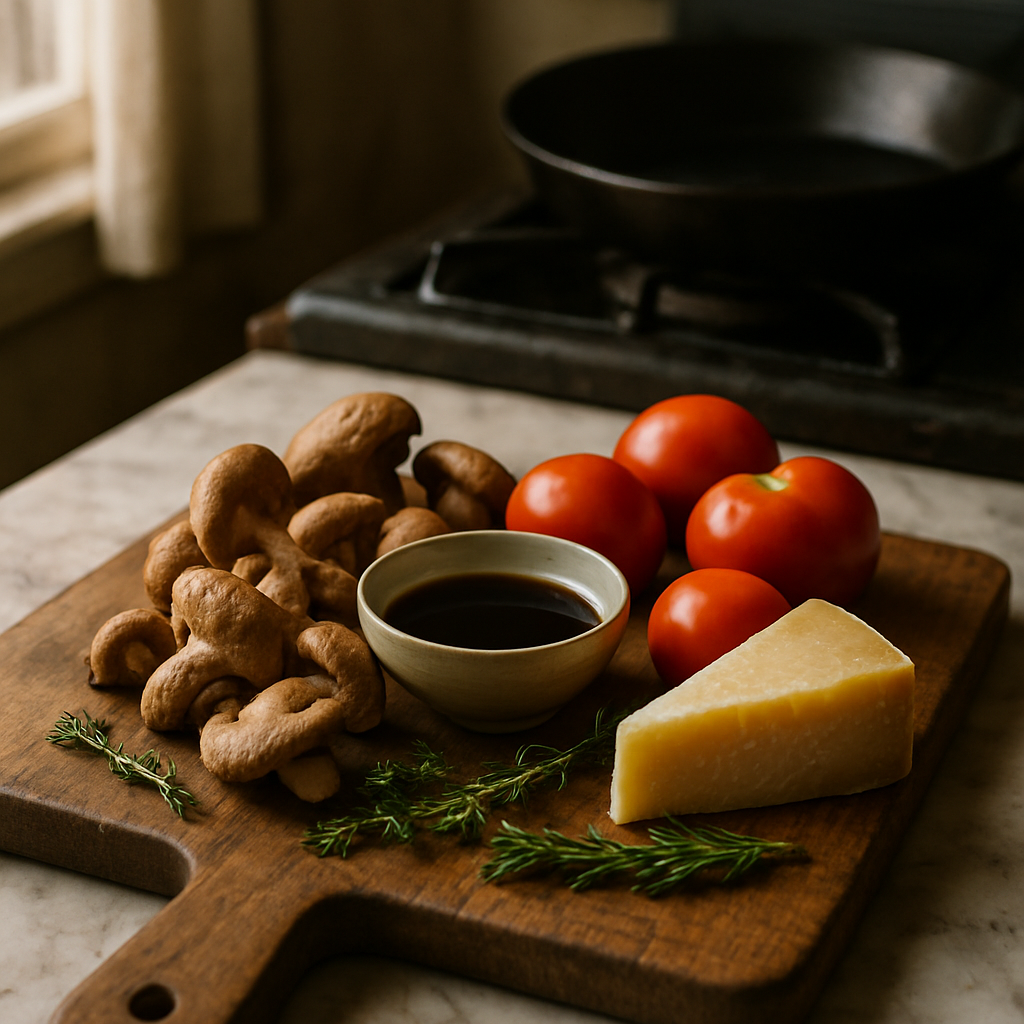Uncovering the Secrets of Umami in Everyday Cooking

You know, there’s something magical about that savory, mouth-watering taste that just makes you go “wow!” whenever you take a bite of a dish. No, I’m not talking about your grandma’s secret sauce (but hey, that could be it too). I’m talking about umami, the fifth taste! It’s one of those things that you might not even realize you’re experiencing. Yet, it’s working its magic in the background, making your taste buds do a little happy dance. So, what’s all the fuss about umami, and how can you sprinkle a little of its magic into your everyday cooking?
Umami was discovered by a Japanese chemist, Kikunae Ikeda, back in 1908. He identified that the savory taste in seaweed broth was due to glutamate, an amino acid. Fast forward to now, and umami is recognized as one of the five basic tastes alongside sweet, salty, sour, and bitter. It’s that elusive, savory depth that adds richness to our foods.
Finding Umami in Ingredients
If you’re wondering where to find umami, think about the things that make your favorite foods taste so darn good. Ingredients like tomatoes, mushrooms, aged cheeses, soy sauce, and fermented foods are loaded with umami. Ever notice how a sprinkle of Parmesan over pasta just elevates the dish? That’s umami working its charm. Or think about a well-cooked mushroom risotto. It’s not just the creaminess; it’s that deep, earthy flavor that makes it so satisfying.
A few years ago, I decided to experiment with homemade marinara sauce. I had read somewhere that adding a tablespoon of soy sauce could transform a simple tomato sauce. I was skeptical, but the result was nothing short of a revelation. The sauce had a depth and complexity that was just… chef’s kiss! It’s one of those kitchen hacks that feels like cheating but in the best possible way.
Everyday Ways to Boost Umami
Now, let’s chat about how to get more umami into your everyday meals without having to do a complete overhaul of your pantry. First, mushrooms are your best friend. Sauté them until they’re just a bit crispy, and you’ve got an umami bomb ready to go. Toss them in a salad, pasta, or even on a pizza.
Fermented foods are another easy way to introduce umami. Things like miso paste and kimchi can be added to soups, stews, or even a simple vinaigrette for salads. And if you’re like me and love a good snack, how about some seaweed crisps? They’re not only packed with umami but also satisfy those salty cravings.
Speaking of miso, there was this one time when I tried making a miso soup from scratch. It was a chilly autumn afternoon, and all I wanted was something warm and comforting. I didn’t have much experience with miso, so I just went with my gut (and a bit of Googling). The result? A broth so rich and flavorful that it felt like a warm hug from the inside out. I couldn’t believe that something so simple could taste so complex.
Let’s not forget the umami powerhouse: tomatoes. Sun-dried tomatoes, in particular, are intense little flavor bombs. Chop them up and add them to salads, pastas, or even a grain bowl. They provide that tangy-sweet-savory combo that just makes everything better. And for those who are brave enough, anchovies are also a fantastic source of umami. You can dissolve them in olive oil to give dishes a depth that’s hard to beat.
A Little Science and a Dash of Fun
Now, for those of you who geek out over food science (guilty as charged), the reason umami is so satisfying is that it often indicates the presence of proteins. Our bodies naturally crave these building blocks because, well, they help us grow and repair. It’s why a perfectly seared steak or a rich mushroom soup is so darn satisfying. But here’s the kicker you can still get your umami fix on a plant-based diet. Yep, you heard it right.
If you’re thinking, “But I thought only meat had umami,” think again. Many plant-based ingredients are bursting with it. Nutritional yeast is like a vegan’s best-kept secret. Sprinkle it on popcorn, pasta, or even your morning avocado toast for a cheesy, nutty kick. It’s packed with B vitamins too, so there’s that health bonus.
Let’s not overlook the power of good old soy sauce and tamari. These fermented condiments are like liquid umami. A splash here and there can transform stir-fries, marinades, and dipping sauces. And speaking of sauces, try experimenting with different types of vinegar they can add a surprising depth to dishes. Who knew, right?
During a particularly adventurous phase, I tried making a vegan Bolognese with lentils and walnuts. I added some soy sauce and nutritional yeast into the mix, just to see what would happen. The result? A hearty, flavorful dish with layers of umami that even my meat-loving friends couldn’t resist.
While we’re at it, let’s talk about kombu, a type of seaweed often used in Japanese cooking. It can be added to stocks and broths for an umami boost. Plus, it has iodine, which is a nifty nutrient our bodies need. I once added a strip of kombu to a pot of beans while they were cooking. Not only did the beans cook up tender and delicious, but they also had this savory depth that I can only attribute to the kombu magic.
But wait, there’s more! Have you ever tried roasted garlic? Trust me, it’s a game-changer. When roasted, garlic becomes sweet, mellow, and, yes, packed with umami. Spread it on toast or mix it into mashed potatoes for a flavor explosion.
The Unexpected Joy of Experimentation
The beauty of umami is that it encourages experimentation. Mix and match, try new combinations, and don’t be afraid to mess up. I mean, what’s the worst that could happen? You end up with a dish that’s slightly more flavorful than expected? Sign me up!
One of my favorite kitchen experiments was trying to make a vegan cheese using cashews and nutritional yeast. I was expecting it to be a flop, but it turned out creamy, cheesy, and very umami-rich. I still tweak the recipe from time to time, but it’s become a staple for those nights when I’m craving something indulgent but dairy-free.
And maybe it’s just me, but isn’t there something liberating about playing around with flavors without worrying too much about getting it “right”? Sometimes, I think we’re too caught up in following recipes to a T when some of the best culinary creations come from happy accidents and a little bit of boldness.
As you explore the wonderful world of umami, remember that it’s about finding what makes your taste buds sing. Whether it’s a splash of soy sauce or a handful of mushrooms, the key is to have fun and let your palate guide you. Cooking is as much about discovery as it is about nourishment. So, grab those umami-rich ingredients and start creating meals that are not only delicious but also deeply satisfying. Happy cooking!


